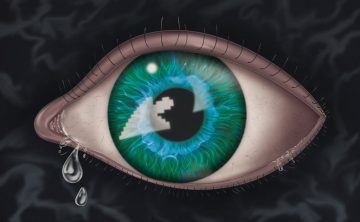Margot Harrison in The New York Times:
 In early April, at the height of the pandemic lockdown, Gianpiero Petriglieri, an Italian business professor, suggested on Twitter that being forced to conduct much of our lives online was making us sick. The constant video calls and Zoom meetings were draining us because they go against our brain’s need for boundaries: here versus not here. “It’s easier being in each other’s presence, or in each other’s absence,” he wrote, “than in the constant presence of each other’s absence.”
In early April, at the height of the pandemic lockdown, Gianpiero Petriglieri, an Italian business professor, suggested on Twitter that being forced to conduct much of our lives online was making us sick. The constant video calls and Zoom meetings were draining us because they go against our brain’s need for boundaries: here versus not here. “It’s easier being in each other’s presence, or in each other’s absence,” he wrote, “than in the constant presence of each other’s absence.”
Petriglieri’s widely retweeted post reads like the germ of a horror tale. The liminal space between presence and absence, reality and unreality, is often where the literature of fear unfolds — a place called the “uncanny.” That old aesthetic term for creeping dread, famously dissected by Freud, is typically now applied to disturbing specimens of digital animation said to reside in the “uncanny valley.”
Screens and artificial intelligence have shown up regularly in the horror genre since the dawn of the personal computer. “Ghost in the machine” stories are so common that, when I submitted a proposal for a horror novel about technology, my editor warned me against deploying a malevolent A.I. as my antagonist. But it’s hard to find scary stories that depict how we become the ghosts in the machine. The anxiety we feel when our virtual connections outweigh our real ones is more often a subject for nonfiction, such as a 2018 New York Times article headlined “A Dark Consensus About Screens and Kids Begins to Emerge in Silicon Valley.” A quote in the piece from a Silicon Valley office worker — “I am convinced the devil lives in our phones” — has stuck with me like the tagline on a dog-eared vintage horror paperback.
